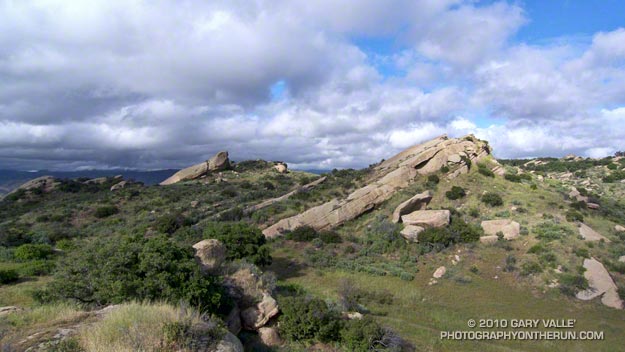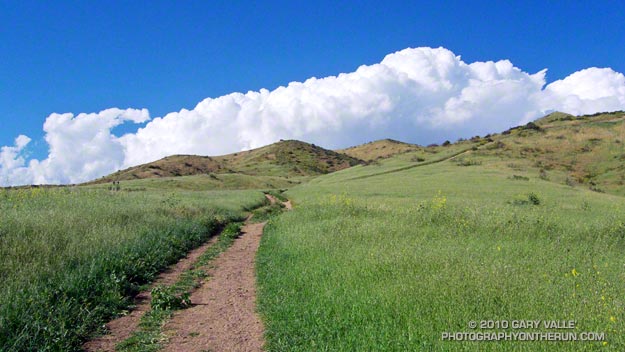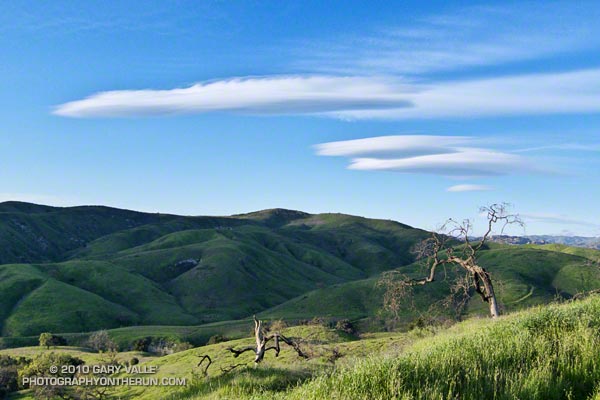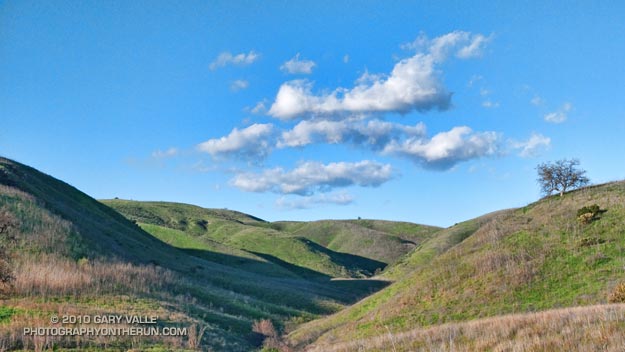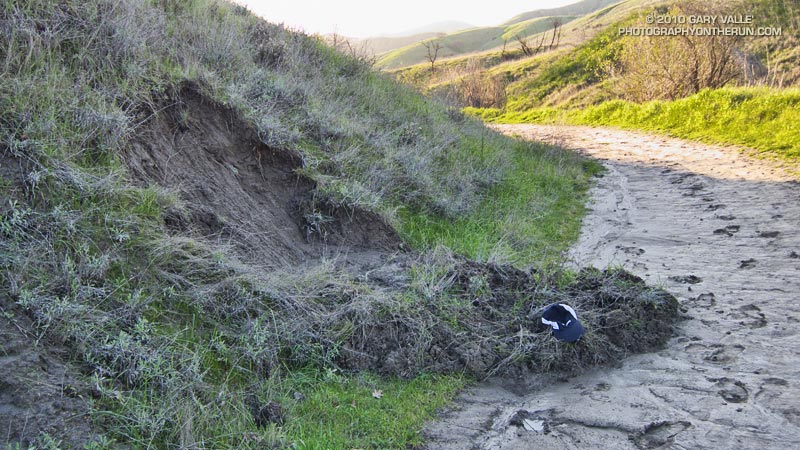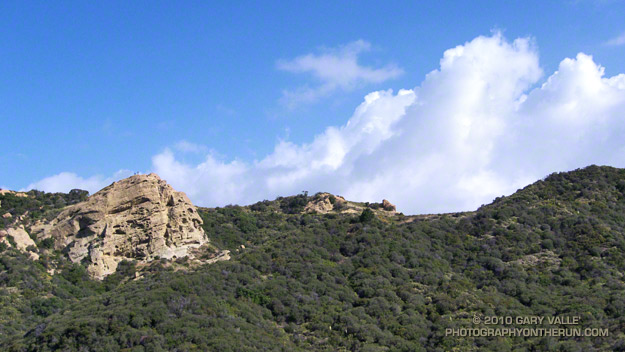
Eagle Rock From Eagle Springs Fire Road
Is it May or March? With all the blustery weather systems that have been moving through Southern California, it’s been hard to tell.
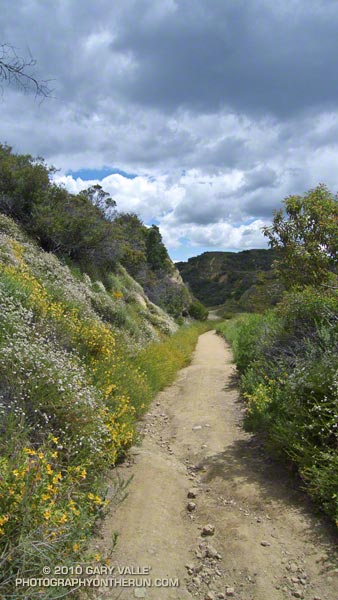
Today I had planned to head back to the high country of the San Gabriels, but instead decided to take advantage of the spectacular weather and do a rambling 24 mile run in the Santa Monica Mountains.
It was a good choice. Early in the run growing mountains of silver-lined cumulus towered above the Hub, and a brisk wind tempted me to pull the sleeves from the pack. Wildflowers lined the trails, and the chaparral teemed with color, sound and scent. It was a long run kind of day.
Note: Later in the day I talked to a runner who had been at Lake Arrowhead early in the morning. He said it had been snowing down to 3000 ft! According to the NWS, record low temperatures for today were set at Lancaster (41°), San Luis Obispo (38°), and Sandberg (28°).

